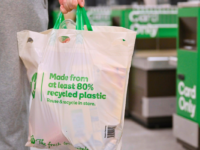 Does your printed packaging ever fail to meet the brand vision? Do the colours not print as expected? Or you find that the final product looks lacklustre on the shelf? Unfortunately, these scenarios will be all too familiar to many marketing managers today.
Does your printed packaging ever fail to meet the brand vision? Do the colours not print as expected? Or you find that the final product looks lacklustre on the shelf? Unfortunately, these scenarios will be all too familiar to many marketing managers today.
Problems with quality are often the result of mistakes made during the design to print process, such as moving forward with concept designs that are not achievable on the press, using artwork files that are set up incorrectly, or receiving inaccurate proofs. The good news is that these mistakes are easily avoidable.
Packaging perfection is possible if you follow our top three tips:
Top tip #1 – Find out if your master packaging design can be printed
The easiest way to improve print quality is to involve your production partners early in the master design concept stage. They should be able to work with your brand agency to identify any potential problem areas for printing and suggest alternatives before designs are finalised. Remember, not all designs will work across different pack sizes or packaging materials, and designs may print differently on each printing press used. Your production partner should also recommend the right colour strategy and most suitable printing method for a high-quality print.
Top tip #2 – Demand designers with the right technical skills and print expertise
Creating finished artwork is more than just applying the master design to different packaging formats. It’s a very technical process that needs to be done correctly to ensure you get high quality packaging. Mistakes made during the artwork stage can result in visual inconsistencies across the product range. The truth is every printing press prints differently. Therefore, the only way to ensure consistency across a product range is to customise each artwork file to the press it will be printed on.
For the best result, it’s critical to use a designer with an eye for detail and in-depth knowledge of the printing process. They will collect the unique printing press specifications from each printer and build every artwork file accordingly. They’ll also lay out all the design elements correctly within the dielines to get brand consistency.
Top tip #3 – Get the proofing right
Colour can look one way when viewed on screen, and entirely different when printed on the final packaging material. Proofing is an essential step in ensuring you get a high-quality print. Proofing allows you to see how the colours in your design will look printed, and gives you the opportunity to make modifications to ensure that the final printed result meets your brand vision.
The proof is also necessary because it becomes the colour target that the printer uses to match the colours on press. But unfortunately, not all proofs are created equal. If your current proofing supplier is using non-certified proofing, then it is very likely that the colours can’t be matched precisely by the printer. And the result is colours that don’t come out right and disappointing final packaging. Ask your proofer to provide ISO certified proofs, because they guarantee colour consistency no matter which printer is used.
If you would like help improving the quality of your packaging, please contact us at info@taskbykirk.com.au or visit www.taskbykirk.com.au.















